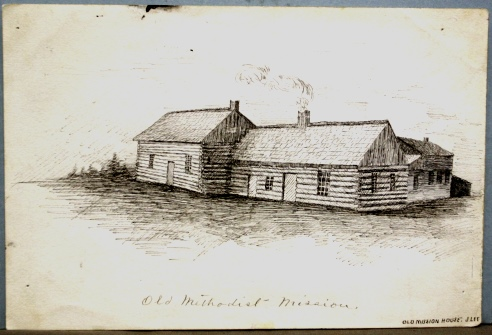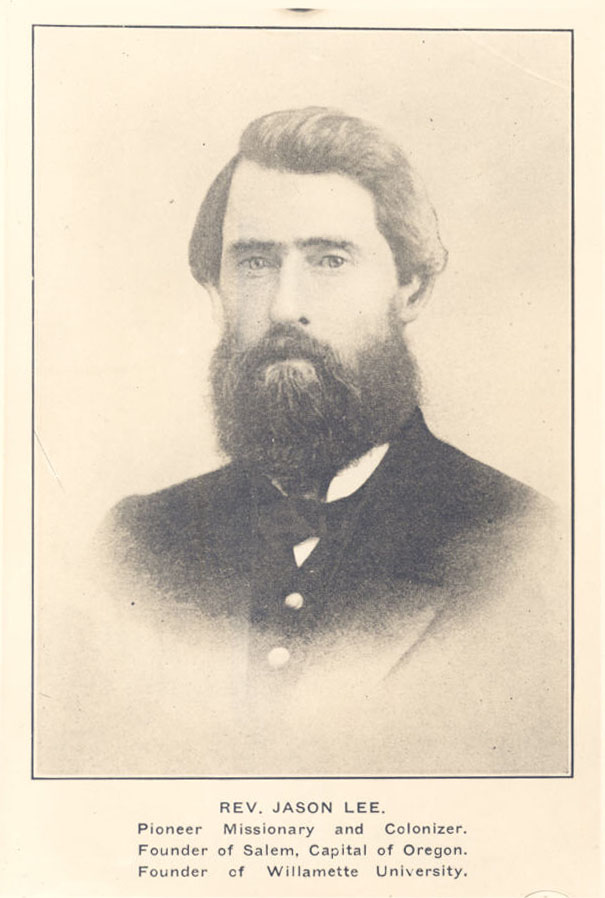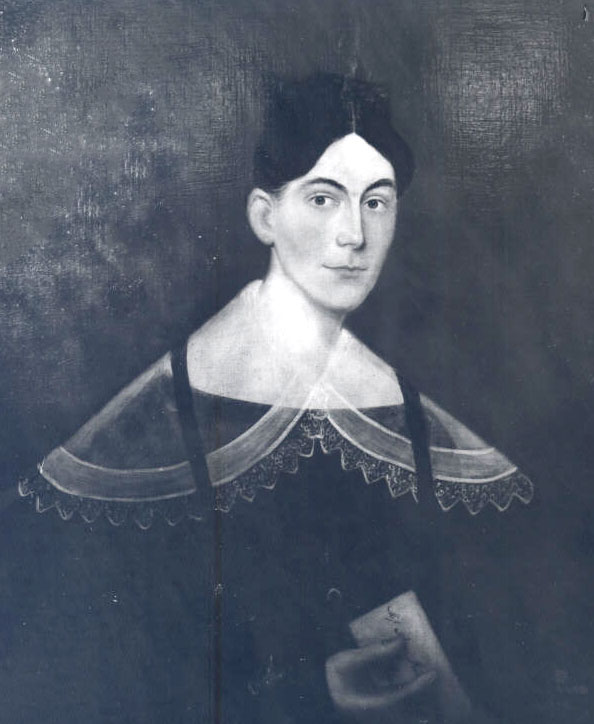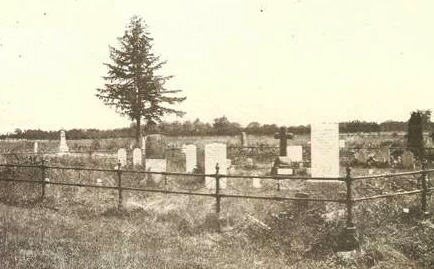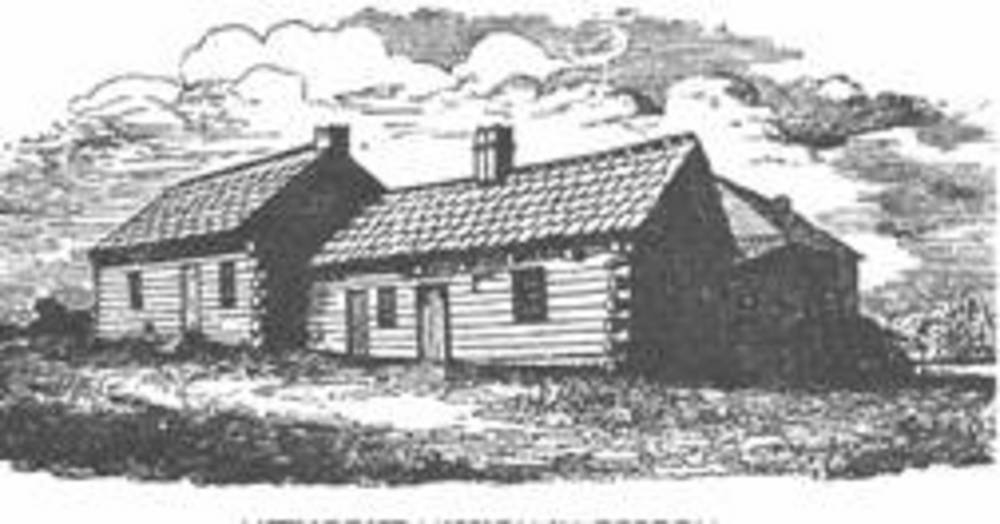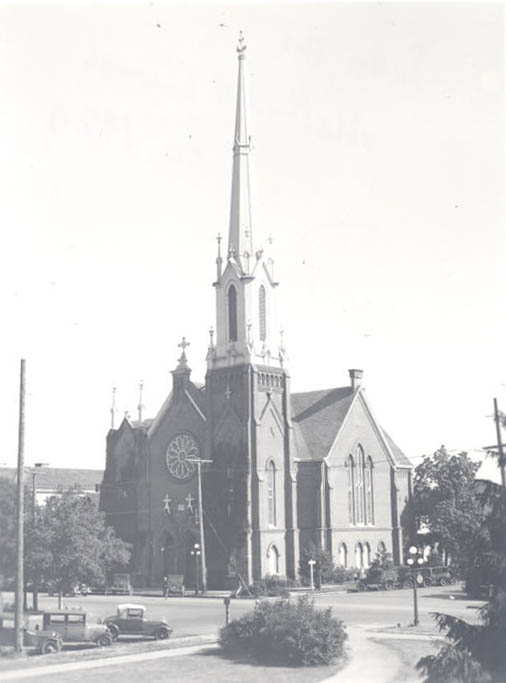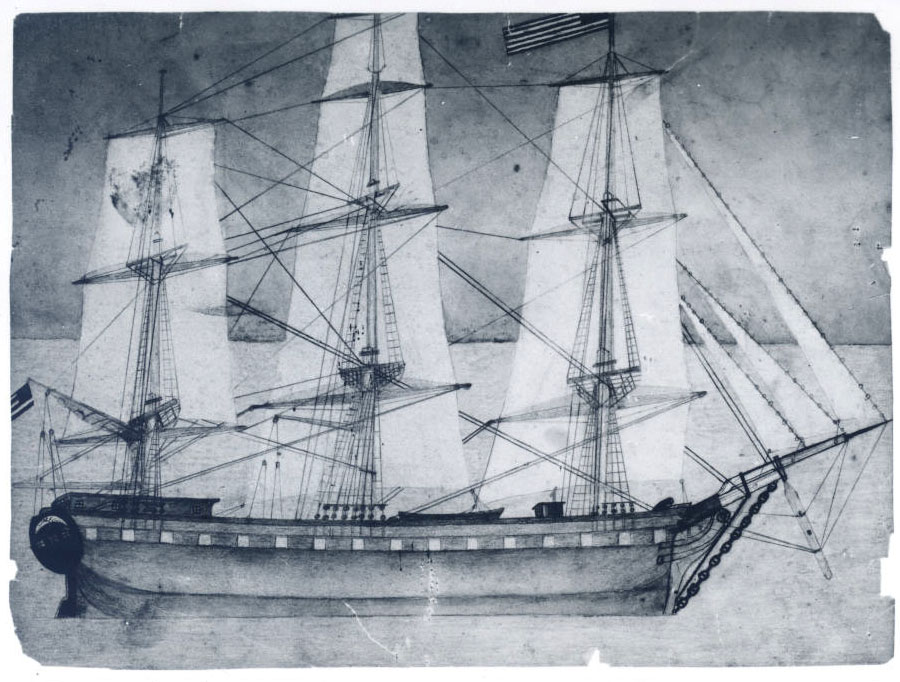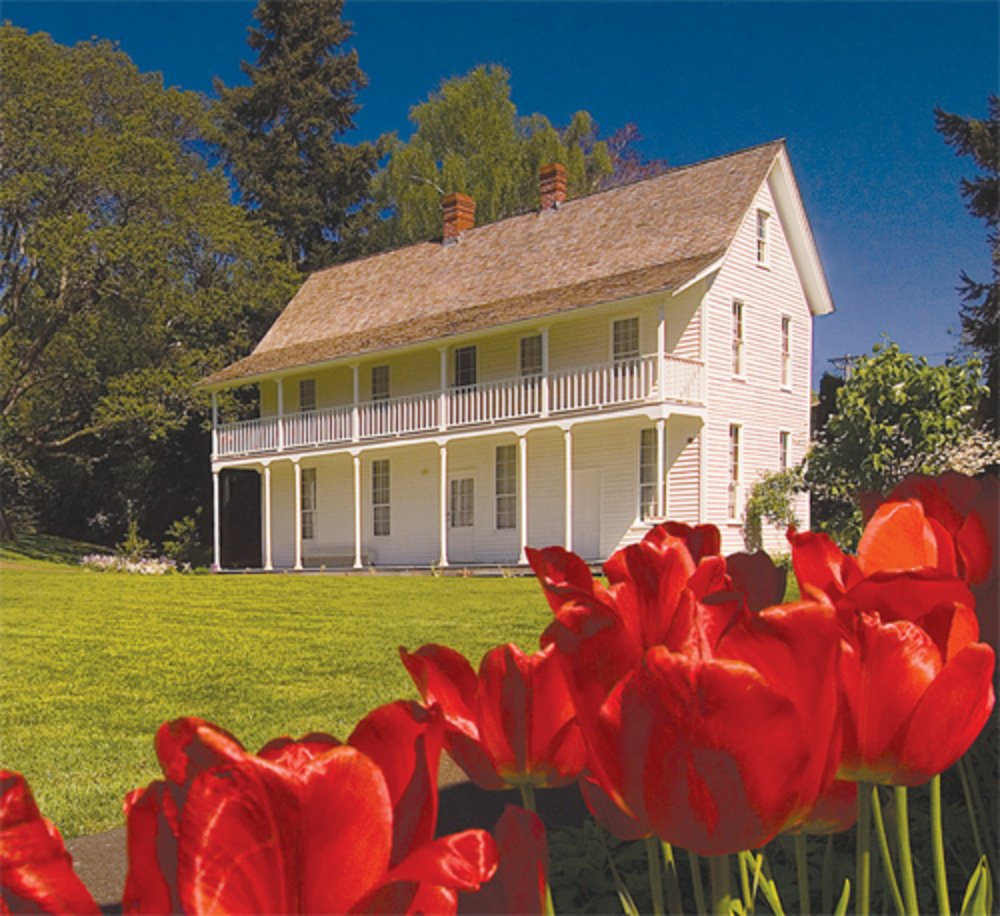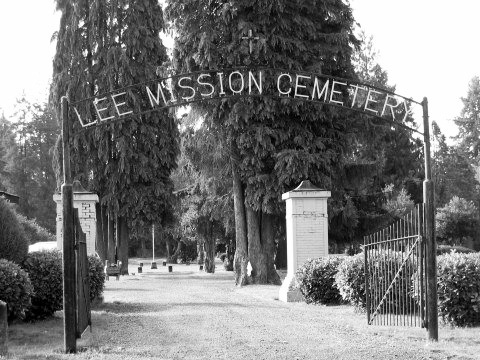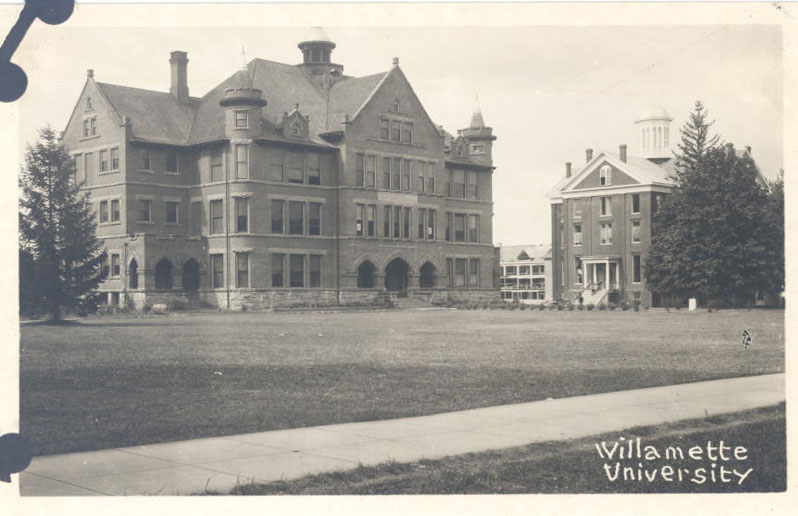Willamette Mission was the first noncommercial agricultural community established in the Willamette Valley by American resettlers, in 1834. The mission became a beachhead for the first political and economic organized activities by Americans in the Oregon Country, and its legacy proved important in the eventual location of the state’s political capital. It is significant, as well, that it was the first organized religious enterprise in Oregon and that it was directed initially at the conversion of Native people to Christianity. In 1992, the United Methodist Church designated the site as a United Methodist Historic Landmark. Historically known as the Jason Lee or Methodist Mission in Oregon, the site has been known as the Willamette Mission since the establishment of Willamette Mission State Park.
In 1832, the Methodist Episcopal Church in New York City laid groundwork to authorize the establishment of an Indian mission on the western frontier. The call was in response to religious awakening punctuated by revivals, camp meetings, and eventually social activism among Methodists, Baptists, and Presbyterians. The outlets for this religious energy were often missionary efforts to take Christianity to Native populations. An article in the Methodist Christian Advocate and Journal in 1833, recounted a Nez Perce and Flathead Indian request in St. Louis for missionaries in Oregon, and that article prompted the Methodist establishment to commit to a Methodist Mission in Oregon.
When the Willamette Mission was established in the Willamette Valley, ten miles north of Salem, the only other non-Native inhabitants in the area were French Canadian former Hudson’s Bay Company trappers who had settled in the valley during the 1830s and 1840s in the rich agricultural area known as French Prairie. The closest outpost that carried a large assortment of goods was Fort Vancouver, sixty miles to the north in what is now Washington State, a horseback trip or canoe paddle down the Willamette River. Goods were later available from stores at nearby Champoeg.
Within a year of announcing a mission in the west, the Reverend Jason Lee, a Methodist minister, accepted the position of superintendent for a Methodist mission in the Oregon Country. His nephew, the Reverend Daniel Lee, agreed to accompany him. Preparations were made in the spring of 1834 to travel across the continent with fur trader Nathaniel Wyeth and his entourage, who were bound for the Columbia River by horse train. Provisions, tools, and supplies were shipped on the brig May Dacre to the Columbia River.
John McLoughlin, chief factor at the Hudson’s Bay Company, suggested that Lee establish the mission in the Willamette Valley. He hoped the mission would locate south of the Columbia River in case a boundary between the United States and Great Britain was established at the river, a matter that would not be settled until 1846. Lee chose a spot on the fringe of French Prairie called Mission Bottom, on the Willamette River. When floods and mosquitos proved problematic, he moved his operations several miles south to present-day Salem in 1841.
To help establish a school to educate Native youth, missionary reinforcements arrived by ship in 1837 from the East Coast by way of the Sandwich Islands (Hawaii). The reinforcements included Anna Maria Pittman, who became Jason Lee’s wife; she and their son would die in 1839 soon after she gave birth. Another recruitment, called the Great Reinforcement, arrived to help develop the mission in 1840 and included ministers, teachers, farmers, and mechanics.
The missionaries also advocated for co-religionists to resettle the region. Many responded and worked with the missionaries to promote the establishment of a provisional government in the Willamette Valley. Lee was removed from his position in 1843, however, under claims that he had spent too much effort on economic development and not enough on teaching Native students. Nonetheless, his mission and the Oregon Institute school at Salem became important centers of social, political, and economic activity in the Willamette Valley during the 1840s and 1850s. The Oregon Institute housed the first session of the legislature and hosted the first territorial court before it was chartered as Willamette University in 1853.
The Methodist mission site is currently in Willamette Mission State Park. Part of the park planning included a study to locate the remains of historic structures. In the summer of 1980, Oregon State University anthropology students under the direction of Professor David R. Brauner excavated the site. They recovered more than nine thousand artifacts that date specifically to the mission occupation period, from 1834 to 1841, and delineated the floor plans of the buildings that formed the mission complex, including the position of the buildings and their inferred functions.
The sample of material items recovered from the mission site indicates the political views and aspirations of the missionaries. The lack of artifacts traditionally associated with the HBC helps substantiate the idea that the missionaries wanted to keep their dependency on the local British supply center at Fort Vancouver to a minimum. Instead, the mission established its own supply network with eastern states. In addition, the recovered artifacts do not reflect the intention of a temporary sojourn in the wilderness, but rather an attempt by the missionaries to establish a way of life in Oregon that was similar to the one they had left behind. By doing so, they encouraged Christian settlement, later evidenced by mass migrations on the Oregon Trail, while they advocated the extension of American political sovereignly to the Oregon Country.
-
![From the estate of Eva Emery Dye. Illustration from the book "Stories of Oregon" by Eva Emery Dye. Used on page 93.]()
Pen and black ink drawing of "Old Methodist Mission/Old Mission House. J. Lee, c. 1900.
From the estate of Eva Emery Dye. Illustration from the book "Stories of Oregon" by Eva Emery Dye. Used on page 93. Oregon Historical Society Museum Collection, 2016-12.10
-
![]()
Rev. Jason Lee.
Courtesy Oreg. Hist. Soc. Research Library, OrHi634
-
![]()
Anna Maria Pittman Lee (1803-1838).
Courtesy Oreg. Hist. Soc. Research Library, 11849
-
![]()
Dr. John McLoughlin.
Courtesy Oregon Hist. Soc. Research Lib., OrHi73380
-
![Graves of Jason Lee and Methodist mission members in Diamond Square, about 1906.]()
Lee Mission Cemetery, Jason Lee grave, ca. 1906.
Graves of Jason Lee and Methodist mission members in Diamond Square, about 1906. In Francis H. Grubbs, comp., Memorial Services at Reinterment of Remains of Rev. Jason Lee, Salem, Oregon, June 15, 1906
-
![Engraving of the original Methodist mission lived in by Jason Lee, based on a sketch made by U.S. Exploring Exped. in 1841.]()
Lee's original mission station.
Engraving of the original Methodist mission lived in by Jason Lee, based on a sketch made by U.S. Exploring Exped. in 1841. Charles Wilkes, Narrative of the United States Exploring Expedition, 1845, vol. IV
Related Entries
-
![First Methodist Church (Salem)]()
First Methodist Church (Salem)
Founded in 1841 by Jason Lee and members of the Methodist Episcopal Chu…
-
![French Prairie]()
French Prairie
Located in Oregon's mid-Willamette Valley, French Prairie was resettled…
-
![Great Reinforcement (1840)]()
Great Reinforcement (1840)
One of the signal immigrations to Oregon came by sea in 1840, years bef…
-
![Jason Lee (1803-1845)]()
Jason Lee (1803-1845)
Few names in the history of early nineteenth-century Oregon are better …
-
![Jason Lee House]()
Jason Lee House
The house built for the Reverend Jason Lee in 1841 is the principal rel…
-
![Lee Mission Cemetery (Salem)]()
Lee Mission Cemetery (Salem)
Lee Mission Cemetery on D Street in northeast Salem was formally consti…
-
![Wascopam Mission]()
Wascopam Mission
Wascopam Mission, which operated at The Dalles from 1838 to 1847, was t…
-
![Willamette University]()
Willamette University
Willamette University, the oldest university in the West, was founded i…
Related Historical Records
Map This on the Oregon History WayFinder
The Oregon History Wayfinder is an interactive map that identifies significant places, people, and events in Oregon history.
Further Reading
Sanders, Judith A., Mary K. Weber, and David R. Brauner. Willamette Mission Archeological Project: Phase III Assessment, 1983.
Brosnan, Cornelius J. Jason Lee: Prophet of New Oregon. New York City: The MacMillan Co., 1932.
Loewenberg, Robert J. Equality on the Oregon Frontier: Jason Lee and the Methodist mission 1834-43. Seattle: University of Washington Press, 1976.
Jason Lee papers, 1834-1845. Mss 1212, Oregon Historical Society Research Library, Portland.
Daniel Lee papers, 1833-1895, Mss 1211, Oregon Historical Society Research Library, Portland.
Alvan F. Waller papers, 1839-1873. Mss 1210, Oregon Historical Society Research Library, Portland.
George Abernethy papers, 1836-1897. Mss 929, Oregon Historical Society Research Library, Portland.
Cyrus Shepard papers, 1829-1840. Mss 1219, Oregon Historical Society Research Library, Portland.

